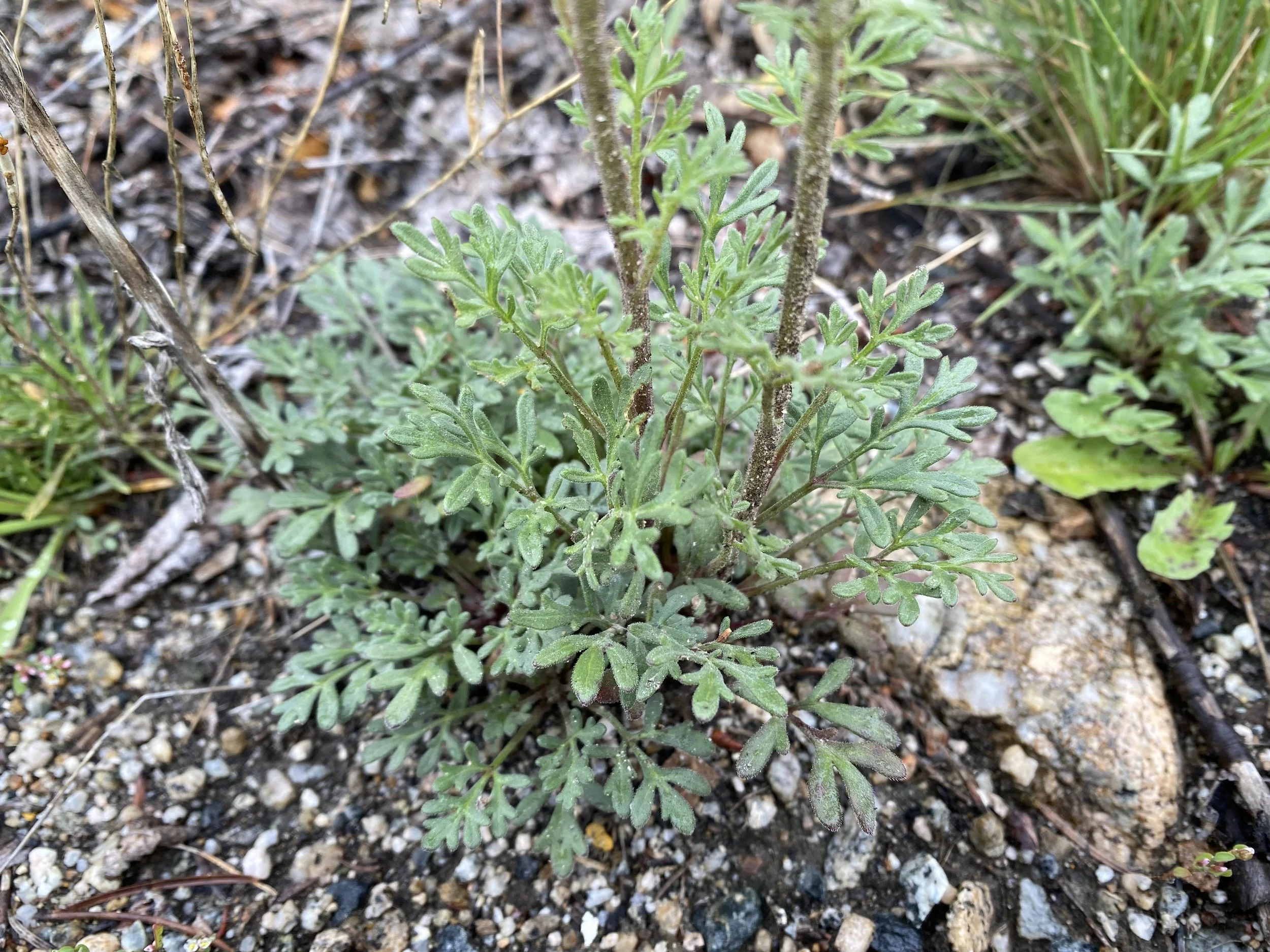Cirsium funkiae, September 5, 2022
Same
Same
Common & scientific name
Funk’s thistle, Cirsium funkiae
Family
Sunflower, Asteraceae
Location:
Crystal Lake drainage, 11,500’
Fun, weird, helpful, or little known fact
Standing up to three feet tall on usually barren or rocky alpine slopes, sporting an enormous, woolly mop of yellow flowers, the funky thistle is impossible to miss. How has it just been “discovered?”
For over a century, botanists lumped the funky thistle (more on that name shortly!) with the common mountain thistle, Cirsium scopulorum. It, too, has a woolly head and dwarfs neighboring alpine plants. But anyone who has seen the funky thistle immediately senses distinctions: its flowers are yellow (as opposed to purple), it’s usually by itself, and it’s so top-heavy it looks ready to fall over.
Fortunately, there are scientists in our midst who are never satisfied with the status quo. Jennifer Ackerfield, author of the comprehensive Flora of Colorado, decided the physical characteristics of this plant were simply too dissimilar to leave unexamined. Genetic studies proved out its separate species status, confirming what many of us amateur botanists wondered, but did nothing, about.
Of the many satisfactions that come with identifying a new species of plant comes the right to name it. Ms. Ackerfield chose to honor her mentor, a curator at the Smithsonian, Vicki Funk, who apparently wore the name well.






























